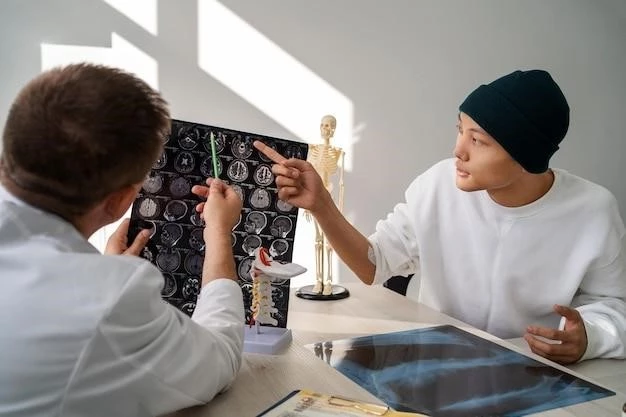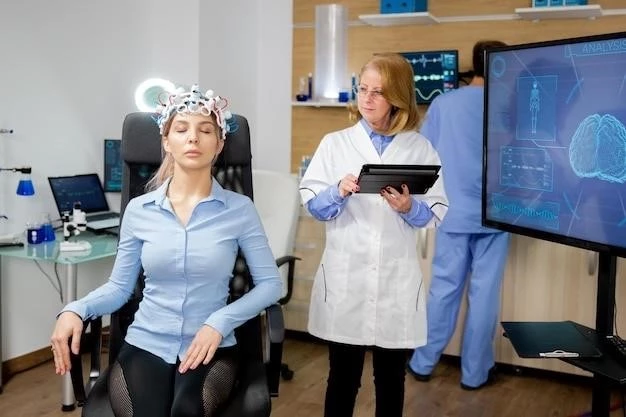Introduction to Neuronal Intranuclear Inclusion Disease (NIID)
Neuronal Intranuclear Inclusion Disease (NIID) is a rare neurodegenerative disorder characterized by the presence of eosinophilic intranuclear inclusions in various systems.
Neuronal Intranuclear Inclusion Disease (NIID) is a rare neurodegenerative disorder characterized by the presence of eosinophilic inclusions in the nervous system‚ peripheral systems‚ and internal organs. The disease presents a diverse range of clinical symptoms and can affect individuals both sporadically and through autosomal dominant inheritance. Notably‚ recent advancements have linked NIID to a GGC repeat expansion in the NOTCH2NLC gene‚ enhancing diagnostic accuracy.
Clinical Manifestations of NIID
- Neuronal Intranuclear Inclusion Disease (NIID) is a rare progressive neurodegenerative disorder with complex clinical manifestations.
Neuronal Intranuclear Inclusion Disease (NIID) is a rare neurodegenerative disorder identified by the presence of eosinophilic intranuclear inclusions in the nervous and visceral systems‚ affecting individuals with significant clinical heterogeneity and potential genetic associations.
Variable Clinical Presentations
Neuronal Intranuclear Inclusion Disease (NIID) showcases a wide array of clinical manifestations that affect the central and peripheral nervous systems‚ bringing about complex symptoms that encompass neuropathy‚ ataxia‚ dementia‚ and various other neurological impairments. The disease’s heterogeneity presents challenges in diagnosis and management due to its diverse clinical spectrum and potential impact on multiple organ systems.
Definition and Characteristics
Neuronal Intranuclear Inclusion Disease (NIID) is a rare neurodegenerative disorder characterized by eosinophilic intranuclear inclusions in various systems.
Presence of Eosinophilic Intranuclear Inclusions
Neuronal Intranuclear Inclusion Disease (NIID) presents a distinct feature marked by the existence of eosinophilic intranuclear inclusions within neurons and glial cells throughout the central and peripheral nervous systems‚ reflecting the disease’s neurodegenerative nature and potential impact on systemic organs.
Genetic Mutations and Inheritance
Neuronal intranuclear inclusion disease is linked to NOTCH2NLC gene mutations‚ contributing to disease development through pathological mechanisms and potential hereditary transmission.
Association with NOTCH2NLC Gene Mutation
Neuronal Intranuclear Inclusion Disease (NIID) has been linked to a GGC repeat expansion in the NOTCH2NLC gene‚ shedding light on the disease’s genetic underpinnings and potential hereditary nature.
Diagnosis of NIID
- Neuronal Intranuclear Inclusion Disease (NIID) diagnosis involves detecting eosinophilic intranuclear inclusions‚ often through skin biopsy analysis.
Utilization of Skin Biopsy for Diagnosis
The diagnosis of Neuronal Intranuclear Inclusion Disease (NIID) involves utilizing skin biopsies for the detection of eosinophilic intranuclear inclusions‚ aiding in the accurate identification of the condition and its underlying genetic mutations.
Treatment Options for NIID
Therapeutic approaches for Neuronal Intranuclear Inclusion Disease (NIID) aim to manage symptoms and improve quality of life‚ with treatments tailored to the individual’s clinical presentation;
Current Therapeutic Approaches
Current therapeutic strategies for Neuronal Intranuclear Inclusion Disease (NIID) focus on symptom management‚ personalized care plans‚ and potential future developments in targeted treatments to address the complexities of the condition and improve patient outcomes.
Research Advances in NIID
No new information found on recent advances or developments in understanding Neuronal Intranuclear Inclusion Disease (NIID).
Recent Developments in Understanding NIID
New insights into Neuronal Intranuclear Inclusion Disease (NIID) have shed light on its complex clinical manifestations‚ genetic underpinnings‚ and potential diagnostic advancements‚ enhancing understanding of this rare neurodegenerative disorder.
Prognosis and Management of NIID
Challenges in predicting the prognosis of Neuronal Intranuclear Inclusion Disease (NIID) and developing effective management strategies persist due to the condition’s complex clinical manifestations and varied outcomes.
Challenges in Prognosis Prediction
Predicting the prognosis of Neuronal Intranuclear Inclusion Disease (NIID) poses significant challenges due to its complex and varied clinical manifestations‚ making it difficult to determine disease progression and patient outcomes with certainty.
Case Studies and Reports on NIID
Recent case studies showcase the clinical complexity of Neuronal Intranuclear Inclusion Disease (NIID)‚ highlighting diverse symptomatology and diagnostic challenges.
Noteworthy NIID Cases
Case reports of Neuronal Intranuclear Inclusion Disease (NIID) highlight unique clinical presentations‚ such as limb tremor onset and rare stroke-like manifestations‚ showcasing the diverse spectrum of symptoms associated with this rare neurodegenerative disorder.

Epidemiology and Demographics
Neuronal Intranuclear Inclusion Disease (NIID) is a rare neurodegenerative disorder reported predominantly among individuals of East Asian descent‚ characterized by eosinophilic intranuclear inclusions affecting the nervous system and multiple organs.
Geographic Distribution and Prevalence
Neuronal Intranuclear Inclusion Disease (NIID) is predominantly reported among individuals of East Asian descent‚ indicating a geographic clustering of the disorder. The prevalence of NIID remains rare‚ emphasizing the need for further research to understand its distribution and impact on diverse populations.
Impact of NIID on Nervous System
Neuronal Intranuclear Inclusion Disease (NIID) exerts a significant impact on the central‚ peripheral‚ and autonomic nervous systems‚ leading to diverse neurological impairments and presenting challenges in diagnosis and treatment.
Effects on Central‚ Peripheral‚ and Autonomic Nervous Systems
Neuronal Intranuclear Inclusion Disease (NIID) has a profound impact on the central‚ peripheral‚ and autonomic nervous systems‚ contributing to diverse neurological symptoms‚ including limb tremor onset‚ stroke-like manifestations‚ and encephalitic attacks‚ showcasing the complex nature of this rare neurodegenerative disorder.
Future Directions in NIID Research
Promising areas for further investigation in Neuronal Intranuclear Inclusion Disease (NIID) research include unraveling the genetic mechanisms driving the disease‚ enhancing diagnostic techniques‚ and developing targeted treatments to address the complex clinical manifestations.
Promising Areas for Further Investigation
Recent research in Neuronal Intranuclear Inclusion Disease (NIID) has opened up new avenues for investigation‚ emphasizing genetic mechanisms‚ diagnostic advancements‚ and potential targeted therapies to address the intricacies of this complex neurodegenerative disorder.

Conclusion
Neuronal Intranuclear Inclusion Disease (NIID) is a rare neurodegenerative disorder with a varied and complex clinical presentation. Recent research has brought about a better understanding of its genetic basis‚ diagnostic techniques‚ and potential treatment avenues. As investigations in this field continue‚ further progress is expected to enhance the management and outcomes for individuals affected by NIID.
